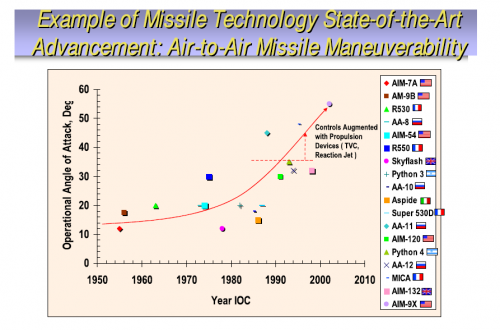As we know, all planes have some sort of angle of attack limits. Some are software driven, others are not crossed due to visible effects such as buffeting, loss of control and loss of lift.
F16A for example has its instantaneous load limit set to 1G at mach 0,4; 2G at m 0,5; 4G at m 0,7; 6,5G at m 0,9 and so on. (30k feet, 24k lbs)
But what about missiles? Sparrow? Amraam? Sidewinder? Any missile, really. Are there any graphs showing their AoA limits or even better their G force limits as a function of speed? (at similar air density, meaning 30ish thousand feet?)
F16A for example has its instantaneous load limit set to 1G at mach 0,4; 2G at m 0,5; 4G at m 0,7; 6,5G at m 0,9 and so on. (30k feet, 24k lbs)
But what about missiles? Sparrow? Amraam? Sidewinder? Any missile, really. Are there any graphs showing their AoA limits or even better their G force limits as a function of speed? (at similar air density, meaning 30ish thousand feet?)

